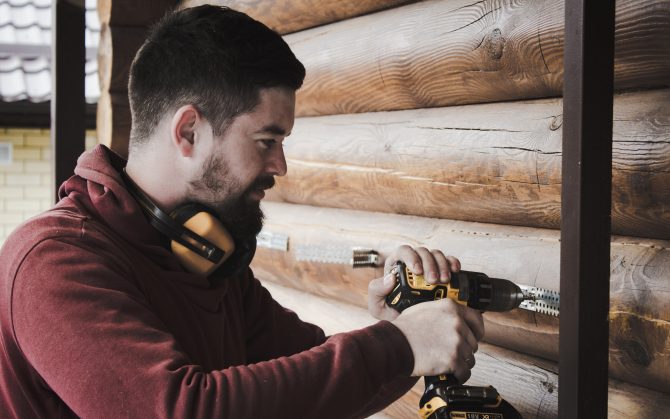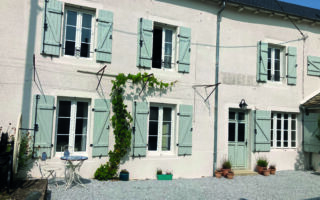The Cost of Renovating a French Property

From Small Jobs to Big Jobs
After buying a new property it is likely that you will plan to carry out some kind of modification or extension to your home. In many cases, this may simply involve changing the wallpaper or internal decoration. However, if you are planning on carrying out any work – even making minor changes – you should contact the pertinent authority, which is likely to be the local Mairie.
At first glance small jobs that may appear harmless to you may be subject to regulation. For example, if the property is located close to a historical building, it may be necessary to check with the services of the architecte des bâtiments de France to find out what colours can be used to repaint the shutters. Although the precise authorisation you require will depend on your plans for the property, the Mairie office would be a good place to start as they can tell you what is or is not permitted.
-
Certificat d’urbanisme
If you are buying a plot of land in order to build a new property or are planning to extend your property, it would be highly advisable to obtain a certificat d’urbanisme pré-opérationnel, known as a ‘CU-b’. A CU-b differs from the very common certificat d’urbanisme informatif or CU-a. The Notaire in charge of your purchase will obtain a CU-a before completion. However, this does not relate to any work you may want to do in the future, so obtaining a CU-b is advisable.
A CU-b issued as positif is valid for 18 months. Even if you are issued with a CU-b positif, however, you will have to obtain further planning permission; the two main ones being the déclaration préalable de travaux dispensés de permis de construire and the permis de construire.
-
Small jobs
A déclaration préalable de travaux gives authorisation for small scale work, such as building a garden shed smaller than 20 square metres. It is worth noting that there is a proposal that this may be changed in the future to at least 40 square metres. Once the application has been properly completed and submitted, the local authorities have one month to process it. If you do not receive a response within this timeframe, authorisation is treated as granted.
Big jobs
For larger construction projects, a permis de construire is needed. If you are planning to convert a barn into a dwelling, for example, this is likely to be treated as a new building. As with the déclaration préalable de travaux, the application is submitted to the local Mairie. In some cases, and in particular if the construction exceeds 170 square metres, the plans must be drafted by an architect. In the case of the permis de construire the local authorities usually have two months to process an application and once again, if you receive no reply, the authorisation can be treated as granted. However, even if authorisation is granted, work cannot start immediately. From the day after authorisation is granted, the authorities have a three-month window in which to withdraw it. Even if this may appear unlikely, this risk should be taken into account. There is also an obligation for the beneficiary of the authorisation to display it at the property and a special board must be used in this respect. In practice, it is advisable to ask a huissier de justice to draft a report in order to ascertain that this obligation has been respected. During the three-month delay running from the day on which the authorisation is displayed, third parties such as neighbours may challenge it. Once these delays have expired, a certificate should be requested from the local Mairie to confirm that the authorisation was neither withdrawn nor challenged. You must keep the local authorities informed of when work is going to start by filling in a form know as the déclaration d’ouverture de chantier. This ouverture de chantier must usually take place within two years of the date authorisation is granted. Once the work has been completed, a déclaration d’achèvement des travaux must be submitted to the local Mairie. This document is important as it is used by the French tax administration to update the records of the property. Whilst completing this document, it would also be wise to request a certificat de conformité which confirms that the work carried out complies with the initial authorisation. If and when you sell the property, a potential purchaser is likely to request this document. It is therefore wise to request it immediately after the work has been completed, as it would be difficult to try to obtain it years later.
Building without going through the correct procedures could result in judicial proceedings, fines or a demand for the construction to be removed completely, so it is advisable to follow the steps outlined above, as well as seeking specialist advice before embarking on such a project.
•Vincent Morand, Diplôme Supérieur de Notariat, Ashton KCJ solicitors. Tel: 01284 727 036
This article is for general information purposes only and does not constitute legal or other professional advice. We would advise you to seek professional advice before acting on this information.
Ashton KCJ is authorised and regulated by the Financial Services Authority. Ashton KCJ solicitors is regulated by the Solicitors Regulation Authority, No. 50075.
Share to: Facebook Twitter LinkedIn Email
More in decoration, garden, land, legal, renovation, tax, work
Leave a reply
Your email address will not be published. Required fields are marked *



